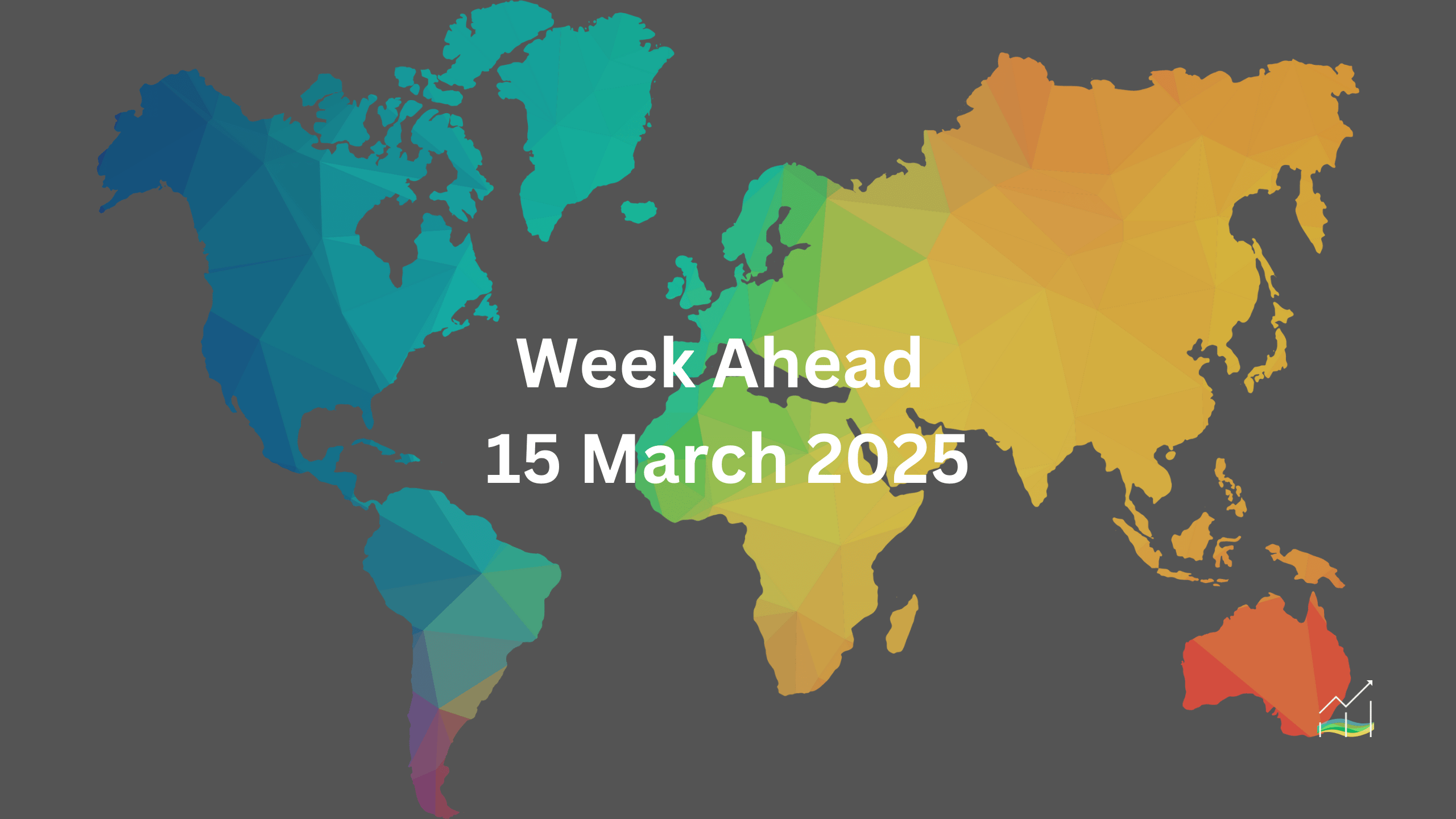15/03/2025 Week Ahead

U.S. Economic Policy Shifts
The new US foreign economic policy, initially designed with the expectation that dollar appreciation and reduced exporter prices would offset the cost of tariffs, has unexpectedly resulted in the dollar weakening against major global currencies. Recently, the US dollar reached new yearly lows against currencies such as the Chinese yuan, Mexican peso, euro, British pound, and Japanese yen.
China has actively resisted pressures from large international retailers aiming to drive down producer prices further. In particular, Chinese authorities intervened against Walmart's efforts to enforce price reductions, reflecting China's determination to protect local manufacturers from bearing the brunt of US-imposed tariffs.
In the United States, while the immediate risk of a partial federal government shutdown has subsided, tensions persist, setting the stage for potential future confrontations. Meanwhile, severe winter storms experienced in January have likely exaggerated current signs of economic slowdown. Despite these short-term disruptions, the medium-term outlook remains uncertain and concerning. Key factors, such as ongoing tariff disputes, federal employment cuts, and a tighter immigration policy, are collectively delaying corporate investment decisions, undermining consumer confidence, and potentially limiting discretionary spending.
Nonetheless, February data on key economic indicators—including retail sales, industrial production, and housing starts—are expected to show continued growth in economic activity. The Federal Reserve will likely maintain its patient stance, echoing Chairman Powell's recent statements about awaiting clearer signals before making any policy adjustments.
Globally, central banks appear cautious. The Bank of England (BOE) and the Bank of Japan (BOJ), meeting soon, are expected to hold steady. The BOE will maintain openness toward future rate cuts, whereas the BOJ may signal readiness for potential rate hikes. Additionally, the Swiss National Bank (SNB) is anticipated to lower its deposit rate from 0.50% to 0.25%, moving closer to zero interest rates.
Germany is actively shaping its new government and implementing fiscal policies aimed at supporting economic stability and growth. At the same time, China is anticipated to introduce additional measures to bolster domestic consumption and counteract external economic pressures.
United States of America
Overview
Concerns about the US economy persist, though some of the recent pessimism may be overstated. However, underlying economic weaknesses remain, and combined with Europe’s proactive fiscal policy, the perception of US economic exceptionalism is fading. Further tariff conflicts, including reciprocal measures and possible impacts on the automotive sector, are anticipated in early April. These uncertainties create challenges for economic forecasting.
Economic Drivers
Several factors are currently influencing the economic landscape:
- Continued uncertainty around US tariff policies.
- Europe's fiscal measures overshadowing US economic strength.
- Temporary disruptions from severe winter storms skewing recent economic data.
- Potential recovery in US manufacturing after job losses throughout the previous year.
Data and Events
Important economic data and events that investors should monitor include:
- February real-sector data: Expected to improve, reflecting recovery in retail sales, housing starts, and steady industrial output growth.
- Manufacturing employment: February saw a rebound with 10,000 new jobs after two months of declines totaling 15,000 jobs lost.
- FOMC meeting: Scheduled soon, policymakers are widely expected to hold rates steady. The key interest lies in the updated Summary of Economic Projections ("dot plot"), reflecting the Fed's outlook on future rate movements.
Price Action
The US Dollar Index touched a marginal weekly high around 104.10 but struggled to maintain momentum, consistently meeting selling pressure. It has not successfully closed above 104.00 since early March, with the recent low around 103.20 marking its weakest level since mid-October 2024. Although indicators suggest stretched conditions, a further decline cannot be ruled out.
Key Points:
- US economic slowdown concerns remain but appear somewhat exaggerated in the short term.
- Potential tariff escalations are anticipated by early April, notably impacting the automotive sector.
- February economic data expected to rebound from January's storm-affected weakness.
- The Fed is likely to keep rates unchanged at the upcoming meeting; key insights will emerge from the updated economic projections.
- The Dollar Index remains under pressure, unable to sustain gains above key levels, and further downside is possible.
Australia
Overview
The Australian dollar is currently exhibiting a strong correlation with the Canadian dollar, marking one of the highest correlation levels in recent months. Despite gaining about 2.2% this quarter, the Australian dollar remains among the weakest performers in the G10 currency group, surpassed only by the Canadian dollar. Investors are closely monitoring key economic indicators and market expectations ahead of upcoming reports and policy decisions.
Economic Drivers
The Australian dollar's current movements are influenced by several key factors, primarily driven by domestic employment conditions and external market sentiment.
- Strong correlation with Canadian dollar exchange rates.
- Employment growth, particularly full-time job additions, influencing market optimism.
- Stability of unemployment rates, balanced by increasing workforce participation.
- Positive expectations driven by improved sentiment in Chinese markets.
Data and Events
Key economic data and events to watch closely:
- February Employment Report (Thursday): January showed significant strength, adding 54,100 full-time positions, the highest monthly increase since July 2024.
- Unemployment Rate: Slightly rose to 4.1% in January from 4.0% in December, reflecting higher workforce participation rather than job market weakness.
- Central Bank Meeting (April 1): The Reserve Bank of Australia is widely expected to hold interest rates steady at 4.10%, with minimal likelihood of policy change.
Price Action
Recently, the Australian dollar has remained relatively stable, trading within a narrow range of approximately $0.6260 to $0.6360. Positive sentiment in Chinese markets and anticipated improvement in US economic data could offer support for the Australian dollar, potentially driving prices toward February's high near $0.6415. However, caution is necessary if the currency breaks below its current trading range, signaling a shift in market conditions.
Key Points:
- Strong correlation noted between Australian and Canadian dollars.
- Employment data remains crucial, with full-time job gains strengthening market sentiment.
- Unemployment stability linked to higher participation rates, not weaker job conditions.
- RBA expected to maintain current interest rates at the upcoming meeting.
- Potential for further gains in the Australian dollar, but caution advised if support levels break.
Canada
Overview
Canada has appointed a new prime minister amid increasing economic uncertainty driven by ongoing US tariff threats. In response, the Bank of Canada has implemented another interest rate cut to mitigate downside risks. Outgoing Prime Minister Trudeau announced a C$6.5 billion support package for businesses negatively impacted by US tariffs, particularly exporters and the agriculture sector. Despite sufficient fiscal room, Canada remains highly exposed to potential US tariff escalations.
Economic Drivers
Canada's economy currently faces several critical factors shaping its outlook:
- Recent US tariff threats creating substantial downside risks.
- Fiscal stimulus measures (C$6.5 billion) designed to buffer the economy from external shocks.
- The Bank of Canada’s proactive rate cuts to sustain economic stability.
- A projected decline in Canada’s budget deficit, creating fiscal flexibility.
Data and Events
Investors and businesses should closely watch the following key economic events this week:
- January Portfolio Flow Report: In 2024, foreign investment in Canadian securities averaged C$16 billion monthly, the highest level in three years, reflecting solid international confidence despite uncertainties.
- February Consumer Price Index (CPI): CPI has consistently declined over the past three to six months, enabling the central bank to ease monetary policy further if needed. Markets expect another rate cut by July, with an over 85% probability of an additional cut later in the year.
- January Retail Sales: After December's temporary boost (due to a short-term sales tax holiday), retail sales are expected to have fallen slightly (-0.4%) in January. Canada's economic growth is projected to slow significantly, reaching its weakest quarterly rate (1.6%) since late 2023.
Price Action
The Canadian dollar experienced minimal movement last week, marking only a marginal 0.12% gain in Q1 2025, thus remaining the weakest G10 currency performer year-to-date. The currency's price has been volatile, trading mostly between CAD1.4250 and CAD1.4520 against the US dollar, reflecting investor uncertainty. Given persistent tariff threats from the US, the Canadian dollar may continue to experience heightened volatility until greater clarity emerges.
Key Points:
- Canada appoints a new prime minister amidst economic pressures from US tariffs.
- Trudeau’s government introduced a C$6.5 billion fiscal stimulus to protect affected industries.
- The Bank of Canada cut interest rates again due to tariff-related risks and low inflation.
- February’s CPI data crucial, as inflation has been declining consistently.
- Canadian economic growth expected to slow significantly in Q1 2025.
- Canadian dollar remains volatile, trading mostly between CAD1.4250 and CAD1.4520.
China
Overview
China continues to manage its currency, the yuan, effectively, maintaining relative stability despite ongoing economic challenges. Through both formal measures and behind-the-scenes strategies, Chinese authorities have kept currency volatility under control, reflecting their commitment to economic steadiness. The increased US tariffs present significant headwinds, yet Chinese policymakers are resisting currency depreciation as a means of offsetting tariff impacts. Additionally, recent measures have prevented international companies from forcing local producers into price cuts.
Economic Drivers
Several factors currently influence China's economic outlook and currency stability:
- Active currency management by Chinese authorities, keeping yuan volatility low.
- US tariff increases (20%), which pressure Chinese exports despite their reduced reliance on the US market.
- Domestic policy measures to strengthen internal demand, mitigating external trade risks.
- Resistance against multinational retailers attempting to shift tariff burdens onto local producers.
Data and Events
Investors should note the following key data and upcoming events:
- Industrial Output: Recorded a growth rate of 7.0% year-to-date in February 2024, with expectations moderating to approximately 5.3% this year.
- Retail Sales: Projected at around 5.3% growth for this year, down slightly from previous highs, reflecting ongoing pressures from trade uncertainties.
- New Economic Initiatives: China is expected to announce further policies soon to boost domestic consumption and counterbalance external economic stress.
Price Action
The yuan has strengthened this year despite ongoing US tariff threats, reflecting deliberate efforts by Chinese policymakers to prevent depreciation. The currency briefly saw its three-month implied volatility dip below 5% in late February, indicating market confidence. The US dollar recently faced increased downside risk against the yuan, testing key support levels near CNH7.20, a level unseen since November last year. Continued downward pressure on the dollar against the yuan remains likely.
Key Points:
- China maintains yuan stability despite US tariffs.
- Chinese authorities reject currency depreciation as a tariff countermeasure.
- Industrial output and retail sales show steady but moderated growth.
- New domestic policies to boost China's internal economic demand are anticipated.
- Yuan strength likely to continue, with potential further dollar weakness.
Europe
Overview
Recent developments in Europe's economic policy, particularly in Germany, indicate progress toward new fiscal measures despite uncertainties. This potential German agreement, along with narrowing interest rate differences compared to the US, has strengthened the euro and boosted European stock markets. The situation remains fluid, but the current outlook appears positive for European assets.
Economic Drivers
The euro's recent strength is driven by positive developments in Europe's fiscal outlook and improved economic confidence:
- Imminent fiscal agreement in Germany, which may soon receive parliamentary approval.
- Narrowing interest rate gap between Europe and the US, enhancing the euro’s attractiveness.
- European equities outperforming their US counterparts due to increased European investment in US stocks.
Data and Events
Key economic data and events to watch closely include:
- German Parliament Vote: A vote on new fiscal policies could occur soon, even under the previous parliamentary arrangement, signalling important fiscal policy shifts.
- German ZEW Economic Survey: The current economic situation indicator improved in early 2025 after declining in late 2024, while expectations surged significantly to their highest level since last year, showing increasing optimism.
- European CPI and Interest Rates: The narrowing interest-rate differential with the US continues to support the euro’s strength. The Swiss National Bank meeting may see a further interest rate cut to 0.25%, which could be their last move barring unexpected economic shocks.
Price Action
The euro recently hit near $1.0950, the highest since October last year, before retracing slightly but still holding above $1.08. The current consolidation phase maintains a bullish tone, setting the stage for another potential rise toward the psychologically significant $1.10 mark. Investors should monitor closely as further upward momentum could push the euro toward its 2024 high and beyond.
Key Points:
- German fiscal policy developments are strengthening the euro and supporting European stocks.
- European equities outperform US markets due to investment flows and narrowing interest rate differences.
- Upcoming German parliamentary vote and economic sentiment surveys critical for eurozone outlook.
- Euro holds strong above $1.08 with bullish sentiment pointing toward $1.10 and potentially higher.
- Swiss National Bank likely to implement a final rate cut unless new shocks emerge.
Japan
Overview
The Japanese yen's recent movements are increasingly influenced by changes in US dollar strength and broader market trends. Its correlation with the Dollar Index has risen, reflecting shifting market sentiment. Domestically, political instability under Prime Minister Ishida’s minority government, highlighted by recent controversies involving gift vouchers distributed to Diet members, further complicates Japan's economic outlook. Investors remain cautious amid these combined political and economic uncertainties.
Economic Drivers
The yen's outlook is currently shaped by several critical factors:
- Increasing correlation between USD/JPY exchange rate and US Dollar Index movements.
- Political instability in Japan, worsened by Prime Minister Ishida’s recent voucher controversy.
- Upcoming parliamentary elections adding further uncertainty to economic policies.
- Market anticipation of future Bank of Japan (BOJ) interest rate increases, despite short-term inflation moderation.
Data and Events
Upcoming economic indicators and events critical to market developments include:
- February Trade Balance Report: Historically improves compared to January, expected again this year, reflecting seasonal trends and offering insight into Japan’s export health.
- February Inflation Data: Inflation likely to ease from 4.0% to approximately 3.6%, due primarily to renewed energy subsidies. Core inflation, excluding fresh food, could dip below 3%.
- Bank of Japan (BOJ) Policy Outlook: No immediate policy changes expected, though markets predict potential rate hikes later in the year, possibly rising toward 1.20% from the current 4.50%.
Price Action
The Japanese yen recently weakened significantly after briefly strengthening to around 146.55 per dollar, its strongest point since last October. The USD/JPY recovered quickly to approximately JPY149.20 mid-week and is now consolidating between JPY147.40 and JPY149.00. Momentum indicators suggest the yen remains overstretched, pointing to potential further weakening if the dollar continues to strengthen.
Key Points:
United Kingdom
Overview
The British pound has recently strengthened, benefiting significantly from the general weakness of the US dollar. Despite modest economic momentum, Sterling remains resilient and relatively stable even amid unexpected negative UK economic data. This resilience underscores improved sentiment, although underlying UK growth continues to face challenges.
Economic Drivers
Several key factors are currently driving the pound's movements and influencing the broader UK economy:
- Broad-based weakening of the US dollar supporting sterling gains.
- Slight but concerning contraction in UK GDP (-0.1%) reflecting limited economic momentum.
- Significant shift in interest rate differentials between the US and UK, from favoring the US to now favoring the UK, boosting sterling’s appeal.
- Persistent wage growth influencing the Bank of England’s (BOE) cautious approach toward rate adjustments.
Data and Events
Important data and upcoming economic events investors should monitor:
- UK Labour Market Report (March 20): Critical for assessing wage pressures and employment health, directly influencing monetary policy decisions.
- Bank of England Meeting: Scheduled shortly after the labor market data; while an immediate rate change is unlikely, future policy hints are expected.
- Daily Economic Releases: Frequent high-frequency data throughout the upcoming week could impact market perceptions and sterling volatility.
Price Action
Sterling displayed resilience last week despite the unexpected GDP decline, maintaining a stable trading range of approximately $1.2915 to $1.2990. The momentum remains positive yet overstretched due to recent significant gains (7.3% rise over two months). Resistance is visible near $1.3000-$1.3050. A definitive move below $1.2860 would signal a likely short-term peak, with a close below $1.2900 providing an early warning sign.
Key Points:
- Sterling gaining due to broad US dollar weakness.
- UK economy faces growth concerns following unexpected GDP contraction.
- Market closely watching UK labor market data and Bank of England's policy direction.
- Sterling currently resilient but approaching critical resistance levels near $1.3000.
- Price correction likely if sterling falls below the $1.2860 support area.
© 2025 SKONE Enterprise (003319453-V). All rights reserved.
The content on this site is for informational purposes only and does not constitute financial advice.


